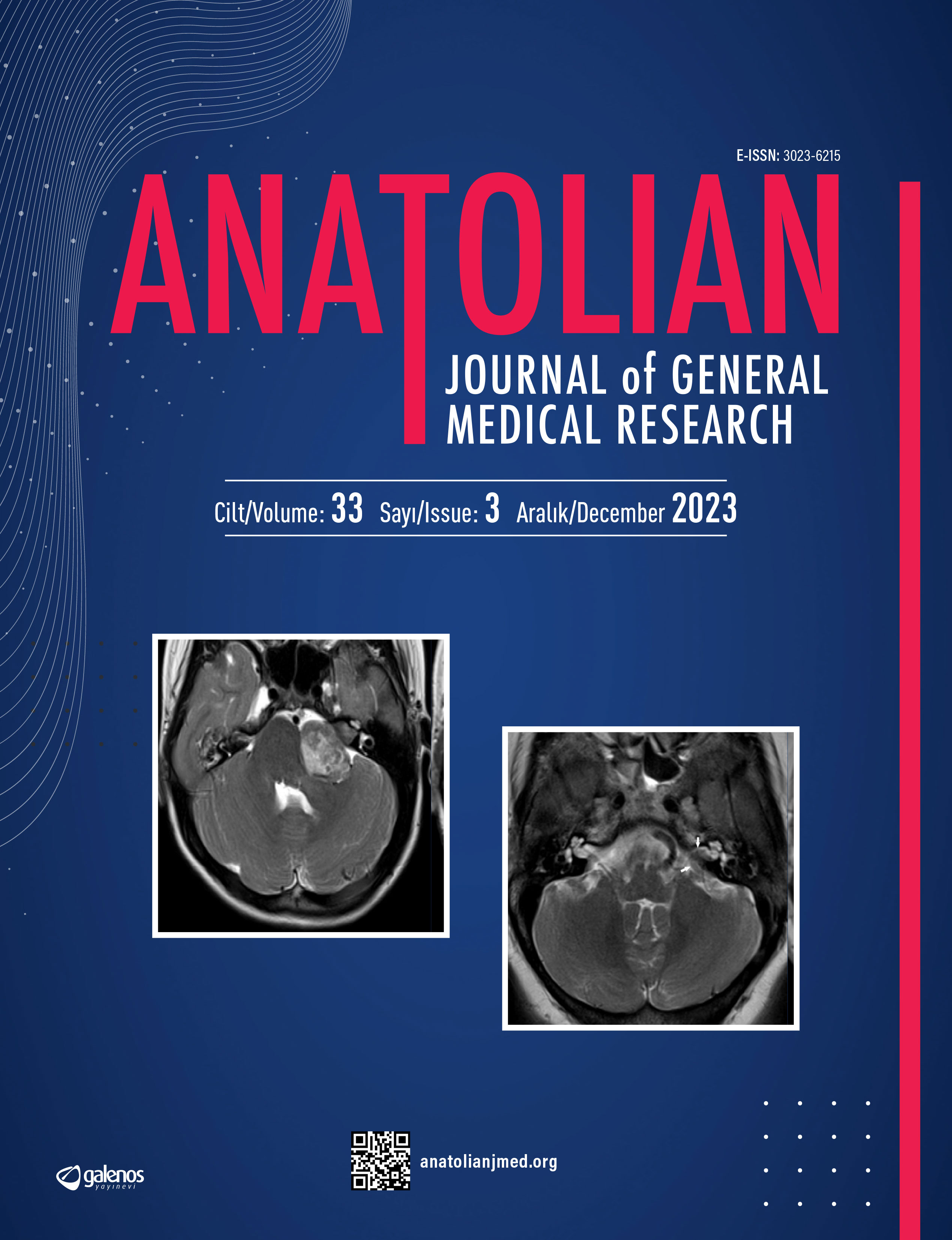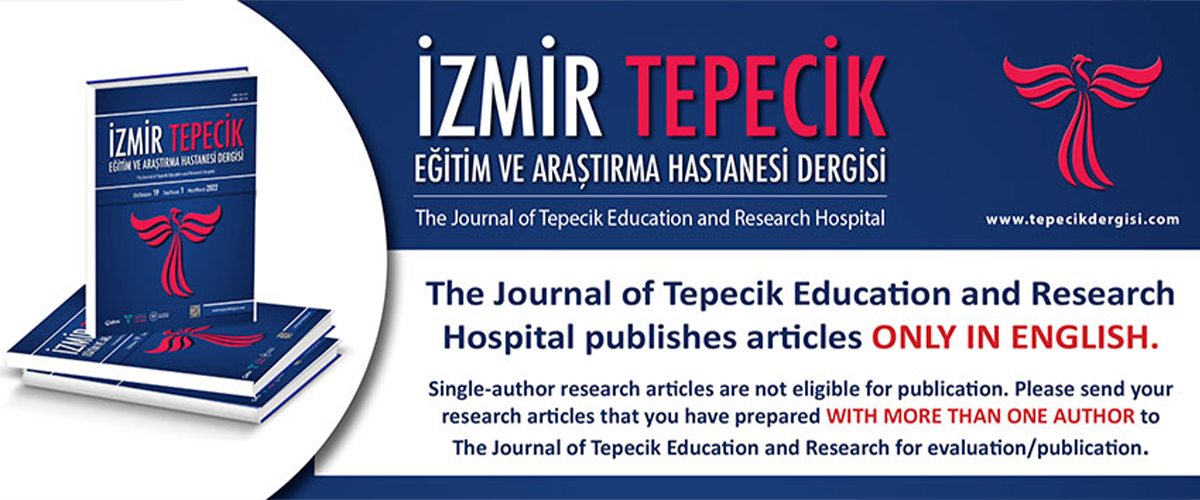








Clinical and Electrophysiological Features of Children with the Guillain Barre Syndrome
Canan Kocaman1, Seda Yıldırım Yeşinel1, Serdar Yeşinel1, Ender Aksüyek1, Gülseren Arslan1İstanbul Bakırköy Kadın Doğum ve Çocuk Hastalıkları Eğitim ve Araştırma Hastanesi, Çocuk Nörolojisi ÜnitesiAim: To investigate the relationship between the subtypes and prognostic features of the patients with Guillain Barre Syndrome (GBS). Methods: Between March 2002 and December 2004 nine children diagnosed as GBS and followed up for 1 year were retrospectively evaulated for age, sex, complaints, history of previous infections, clinical and CSF findings, functional grade of motor deficits on admission, their response to treatment and prognostic features. Electrophysiological studies were performed at the acute phase to ali patients. Nerve conduction studies including motor nerve conduction, sensory nerve conduction and F- wave. response studies were performed by the standart tecnique of surface electrode recording. Standart intravenous immunoglobulin therapy was administered with a dose of 0.4 g/kg/day for five consecutive days. The functional grade of motor deficits was assessed according to the scale of Hughes. Results: There were 9 patients (mean age 2.6 years of age; range 2 to 14 years), including one girl and eight boys. All patiens had history of previous infection except for one patient. Albuminocytological dissociation was observed in four cases. According to electrophysiologic findings, six patients (66%) were AMAN, one patient AIDP, one AMSAN and one Miller Fisher syndrome. Eight patients showed full recovery within 3 months. One patient recovered with seguela. Conclusion: The majority of the patients was of axonal subtype that is more common in developing countries. It was concluded that early diagnosis and treatment may provide full functional recovery at the axonal form which was known to show poor prognostic features.
Keywords: Guillain Barre syndrome, flasque paralysis, intravenous immunoglobulin, subtip, early treatmentGuillain Barre Sendromlu Çocukların Klinik ve Elektrofizyolojik Özellikleri
Canan Kocaman1, Seda Yıldırım Yeşinel1, Serdar Yeşinel1, Ender Aksüyek1, Gülseren Arslan1İstanbul Bakırköy Kadın Doğum ve Çocuk Hastalıkları Eğitim ve Araştırma Hastanesi, Çocuk Nörolojisi ÜnitesiAmaç: Guillain-Barre sendromu (GBS) tanısı alan hastaların elektrofizyolojik olarak saptanan subtipleri ile prognostik özellikleri arasındaki ilişkinin araştırılması. Yöntem: Çalışmada 01.03.02 ve 31.12.04 tarihleri arasında hastanemiz çocuk nörolojisi servisinde GBS tanısıyla yatarak izlenen ve bir yıl süreyle poliklinik takibine gelen dokuz hasta değerlendirildi. Hastalar yaş, cinsiyet, başvuru şikayetleri, geçirilmiş enfeksiyon varlığı, klinik bulgular, başvurudaki fonksiyonel durumları, BOS bulguları, tedaviye yanıt ve prognostik özellikler yönünden yatış ve poliklinik takip dosyalarından retrospektif olarak incelendi. Akut dönemde tüm olgulara elektrofizyolojik çalışma uygulandı. Sinir ileti çalışmasında yüzey elektrod kaydı ile standart teknikler kullanılarak motor ve duysal sinir iletimi ve F dalga yanıtı değerlendirildi. Hastaların tümüne intravenöz immünglobulin 0.4 gram/kg/gün olarak 5 gün süreyle verildi ve fonksiyonel durumları Hughes skalasına göre değerlendirildi. Bulgular: Dokuz GBS vakasının biri kız, sekizi erkekti. Hastaların yaş aralığı 2 ile 14 yıl (ortalama yaş 6.2) arasında değişmekteydi. Hastaların biri hariç hepsinde önceden geçirilmiş bir enfeksiyon öyküsü mevcuttu. Beyin omurilik sıvısı (BOS) incelemesinde albuminositolojik disosiasyona dört olguda rastlandı. Altı (%66) hastada AMAN subtipi saptanırken AIDP, AMSAN ve Miller Fisher sendromlu birer hasta mevcuttu. Dokuz olgunun sekizinde fonksiyonel tam iyileşme ortalama 3 ayda saptanırken AMAN subtipli bir hastada ağır sekelli iyileşme izlendi. Sonuç: Hastaların çoğunluğunu gelişmekte olan ülkelerde daha sık rastlanılan subtip olan aksonal form oluştumaktaydı. Bu çalışmada kötü prognostik özellik gösterdiği bilinen aksonal formda erken tanı ve tedaviyle fonksiyonel olarak tam iyileşme görülebileceği kanısına varıldı.
Anahtar Kelimeler: Guillain Barre sendromu, flask paralizi, intravenöz immunoglobulin, subtip, erken tedaviManuscript Language: Turkish
(1449 downloaded)




